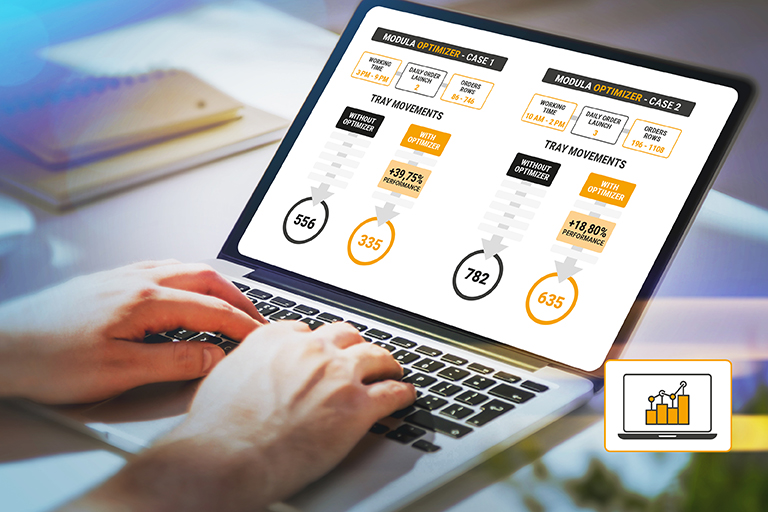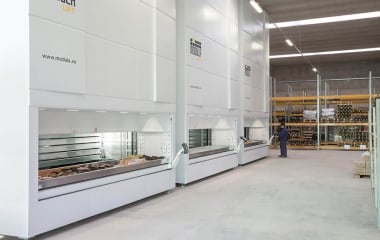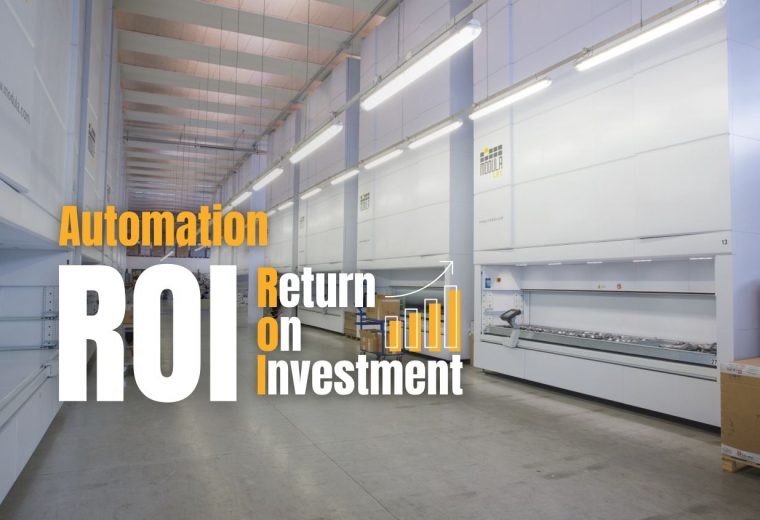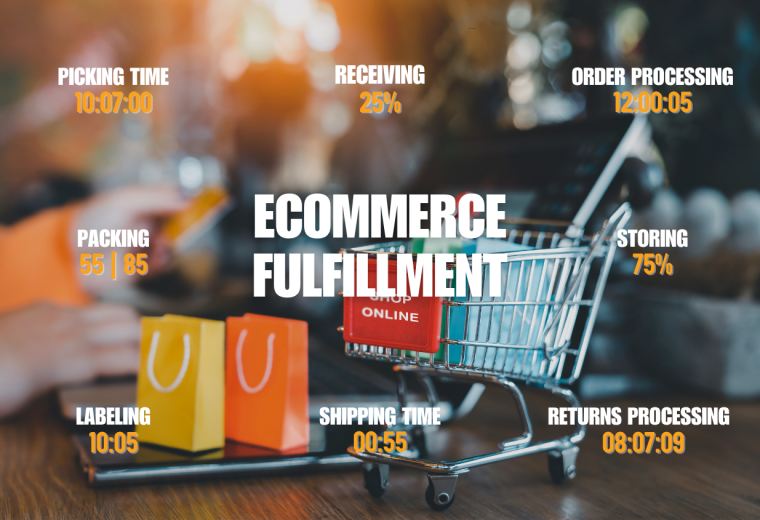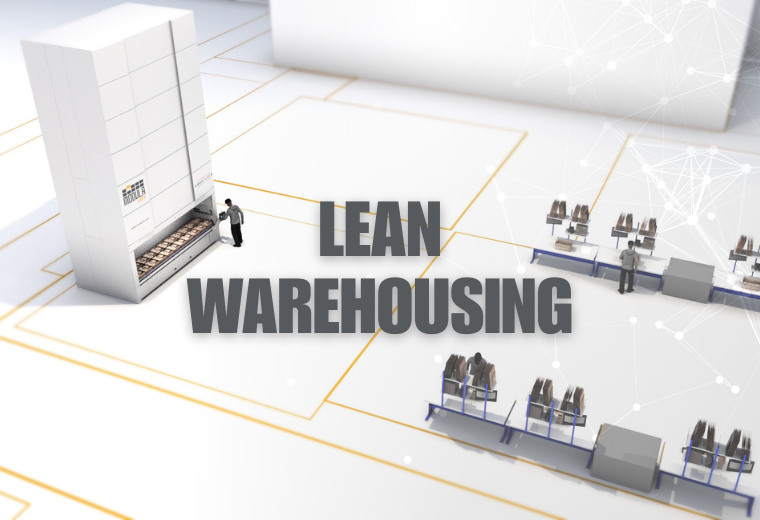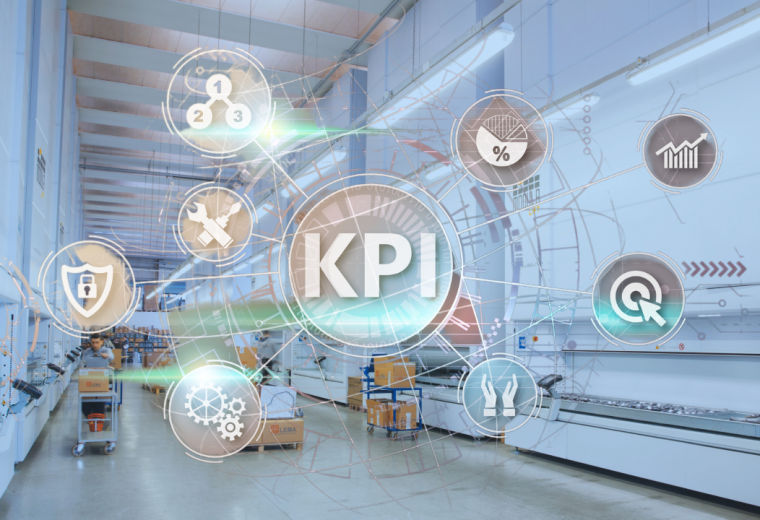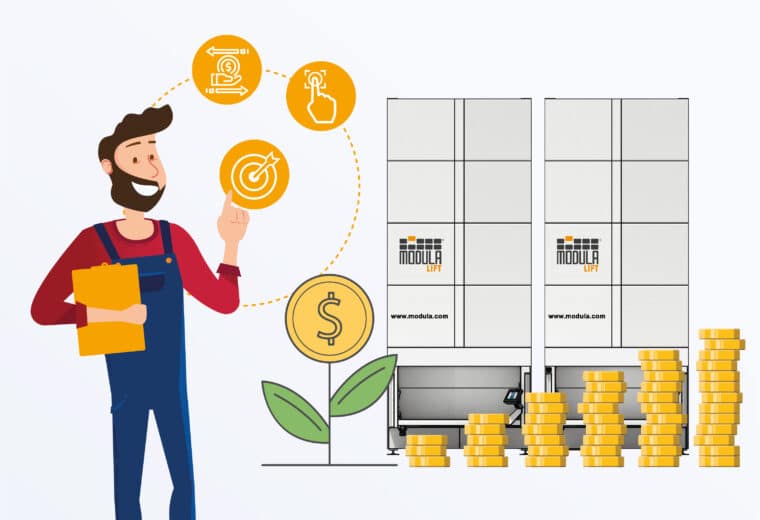AI For Warehouse Management [Benefits & FAQs]
AI For Warehouse Management: Key Points
- AI analytics continuously track equipment to spot early signs of wear, failure or inefficiency
- AI algorithms analyze sales history, seasonal trends, promotions and market shifts to generate precise demand forecasts
- AI works by collecting, analyzing and acting on real-time data to automate warehouse processes, optimize workflows and support smarter decision-making
The global warehouse industry has been relying on manual processes and delayed data entry, often resulting in outdated information by the time it reaches the warehouse management system (WMS).
As operational demands grow, businesses need real-time data and end-to-end visibility to accurately assess performance and optimize workflows and space.
This is where robotics and AI work together to transform modern warehousing. According to the latest McKinsey Global Survey on AI, 65% of organizations now report using AI regularly in their operations.
By collecting, analyzing, and acting on real-time data, AI helps automate warehouse processes, optimize operations, and support smarter decision-making.
In this article, we will:
- Discover ways to use AI in warehouse management
- Understand its key benefits
- Get answers to common questions about AI in warehouse management
- Explore advanced Modula solutions to meet evolving consumer demands
Key Benefits of AI for Warehouse Management
Artificial intelligence is reimagining warehouse operations by enabling smarter, faster and more responsive warehouse operations.
Here are nine ways AI is transforming warehouses:
Accurate Demand Forecasting
AI algorithms analyze large volumes of historical sales data, seasonal trends, promotional activity, and market fluctuations to deliver highly accurate demand forecasts.
This allows warehouses to proactively manage inventory, reducing both overstock and stockouts while fine-tuning procurement and replenishment strategies.
Predictive Maintenance for Equipment Reliability
Using sensor data, AI-powered analytics continuously monitor equipment performance to detect early signs of wear and tear, failure or inefficiencies.
Adopting predictive maintenance strategies allows warehouse operators to decrease downtime, lower maintenance costs and keep essential warehouse equipment running at peak performance.
Improved Order Fulfillment
AI can dynamically prioritize picking tasks by analyzing real-time order volumes, product demand and your facility’s layout.
For example, during peak sales periods such as Black Friday, AI systems automatically prioritize high-demand SKUs, group orders with items located in similar zones and assign tasks using the most efficient pick paths.
This minimizes congestion in high-traffic areas and speeds up overall order fulfillment.
AI-Driven Robotics and Automation
Artificial intelligence enhances the capabilities of autonomous mobile robots (AMRs) and robotic arms, enabling them to navigate complex environments and perform multi-step tasks with precision.
These systems can identify, pick and place items accurately, further reducing errors and increasing operational efficiency.
Real-Time Inventory Visibility
AI-powered computer vision and sensors continuously track inventory movement, delivering real-time and accurate insights into stock levels.
The technology can instantly flag anomalies or misplaced items, helping prevent discrepancies and fulfillment delays.
For example, a warehouse management system (WMS) integrated with AI vision can automatically detect if an item is placed in the wrong bin or shelf and trigger a real-time alert for correction.
Enhanced Workforce Productivity
AI-powered workforce management systems can monitor key employee performance metrics, such as picking speed, accuracy and task completion rates, to make informed, data-driven task assignments.
By analyzing real-time workload distribution and shift patterns, AI can help allocate tasks to the most suitable employees, diminishing congestion in high-traffic areas and balancing workloads across teams.
For example, during peak hours, AI can assign experienced pickers to fast-moving SKUs while directing newer staff to less time-sensitive tasks, maximizing productivity while lowering delays caused by training or inexperience.
Improved Employee Safety
AI-powered technologies, such as wearable sensors, virtual reality training and AI-driven inspection drones, enhance worker safety by analyzing real-time data, monitoring stocking parameters, and enabling proactive maintenance.
These systems, often part of comprehensive AI safety software for warehouse environments, help predict equipment failures and support rapid responses to maintain safety standards and ensure regulatory compliance.
By automating high-risk tasks, AI reduces employee exposure to hazardous conditions, significantly lowering the risk of workplace accidents.
Sustainability
AI plays a key role in warehouse sustainability by optimizing inventory levels, preventing overstocking to conserve storage space and minimizing the risk of spoilage and obsolescence.
It also improves energy efficiency by monitoring usage patterns across warehouses and retail spaces, identifying inefficiencies and cutting emissions to lower consumption without compromising performance.
Smarter Slotting and Space Utilization
AI analyzes product movement patterns, order frequency, and item dimensions to recommend the most efficient storage locations.
By placing fast-moving items in accessible zones and grouping commonly picked products, AI improves slotting strategies, reduces travel time, and maximizes available space across the warehouse.
The Role of AI in Warehouse Management
AI in warehouses operates by collecting, analyzing and acting on real-time data to automate processes, optimize workflows and support smarter decision-making.
Here’s how it functions across key areas:
Data Collection From IoT Devices and Sensors
AI systems rely on data from connected devices such as RFID tags, barcode scanners, weight sensors and cameras.
These tools track inventory movement, monitor equipment health and capture environmental data such as temperature and humidity.
Machine Learning for Demand Forecasting
AI uses historical sales data, seasonal trends, promotional activity, and external factors, such as weather or market shifts, to forecast demand.
These insights can help adjust inventory levels, reorder points, and employee scheduling.
Vision-Based AI for Inventory and Quality Control
AI-powered computer vision scans products on shelves or conveyors to detect misplacements, count stock, identify damage and verify packaging accuracy.
AI-Powered Robotics for Automation
AI powers autonomous mobile robots and robotic arms to navigate warehouses, avoid obstacles and handle tasks like picking, sorting and packing — continually learning to boost efficiency over time.
How To Implement AI for Warehouse Management
Implementing AI in your operations requires a strategic approach. Here are five key steps to ensure a smooth and effective rollout:
Identify Your Needs and Objectives
Start by assessing your current operational challenges and defining clear goals for AI adoption.
- Are you looking to reduce picking errors, boost inventory accuracy, improve labor efficiency or enable predictive maintenance?
- Well-defined objectives will guide your AI strategy and help you select the right solutions for measurable impact.
Gather and Prepare Your Data
AI systems depend on quality data to deliver accurate insights.
- Collect and clean relevant information from your WMS, inventory logs, sensor outputs and historical order records.
- Ensure your data is well-structured, consistent and securely stored to support machine learning models. For example, implementing IoT devices or RFID tags can enhance real-time data capture, improving AI performance.
Choose the Right AI Solutions
Select AI tools that directly align with your operational goals.
- These might include demand forecasting algorithms, computer vision for inventory scanning, AI-powered robotics or workforce optimization software.
- Ensure your chosen solutions integrate seamlessly with your existing WMS and ERP systems. For example, to optimize order picking, an AI-driven route planning tool integrated with handheld devices can reduce travel time and boost accuracy.
Test and Modify Your Solutions
Begin with a small-scale pilot project to test your AI solution in a controlled setting.
- Track key performance indicators (KPIs) such as order accuracy, throughput and system downtime.
- Use these insights to refine your implementation before scaling.
Train Your Employees
AI is most effective when your workforce is confident in using it.
- Provide targeted training for warehouse managers, technicians and frontline employees to help them operate AI-powered tools, interpret data insights and adapt to changing workflows.
- For example, consider using virtual reality (VR) simulations for safety training, AI-driven systems for real-time inventory monitoring and robots with computer vision to enhance order picking and packing.
Choose AI for Warehouse Automation with Modula’s Smart Solutions
Artificial Intelligence is revolutionizing warehouse management by enabling smarter, faster, and more responsive operations. Modula’s AI Services are at the forefront of this transformation, offering tools that optimize storage, reduce waste, and enhance every step of your logistics flow.
Modula Plant Designer
Modula Plant Designer is a tool that supports both the planning of new installations and the analysis of existing systems.
In the pre-sales phase, it helps determine how many Modula units are needed and how to configure them based on real inventory and order data.
Post-installation, it allows you to simulate how your current setup performs under specific order volumes and timeframes, helping you make data-driven improvements.
Key features include:
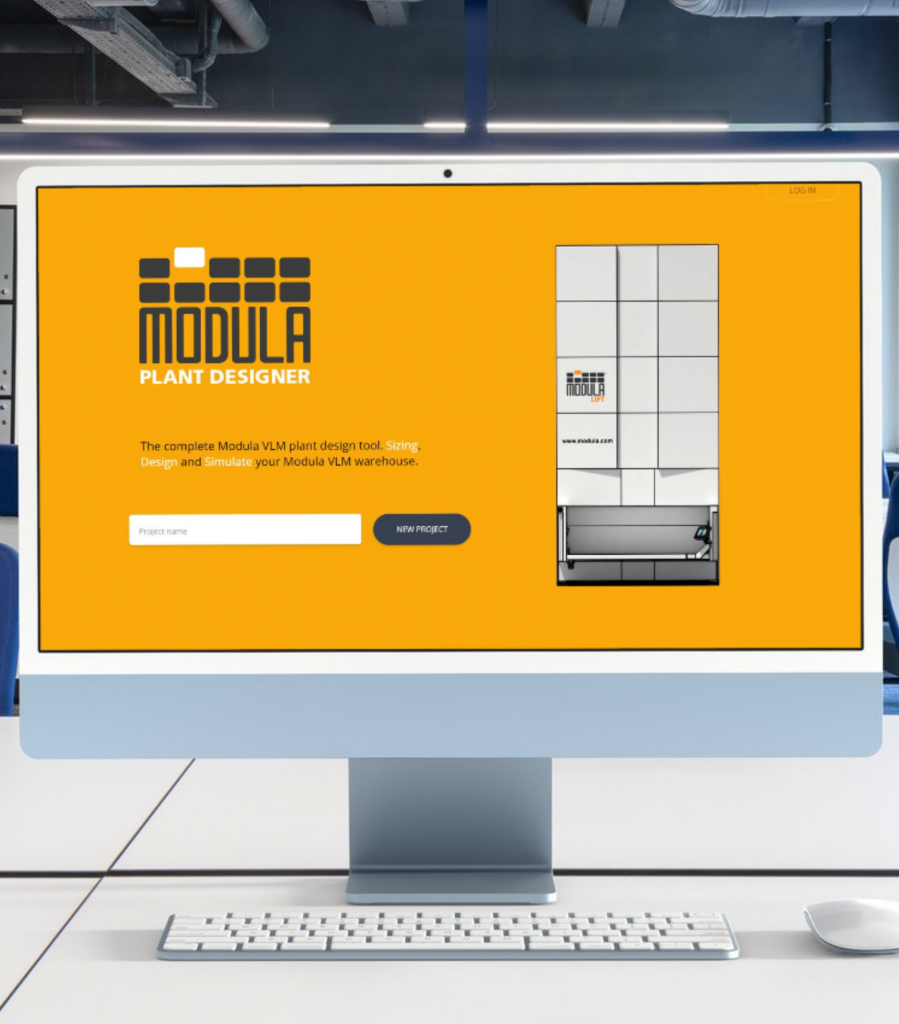
- System Sizing: Accurately calculate the number of units needed to manage your inventory, reducing waste and optimizing costs.
- Basic Tray Layout: Design tray configurations based on item size and characteristics to improve space utilization.
- Advanced Tray Layout: Integrate order data to optimize drawer setups for faster picking and smoother workflows.
- Order Simulation: Simulate real order activity to evaluate system performance and make informed decisions before implementation.
- Tray Layout Design: Create tray configurations tailored to the size and characteristics of stored items to maximize space utilization.
- Order Simulation: Simulate real order activity to evaluate system performance before implementation.
Whether you’re starting from scratch or fine-tuning a live system, Modula Plant Designer gives you the insight to make smarter, more efficient decisions.
Modula Optimizer
Modula Optimizer is an optional software license available with Modula WMS Premium. It uses intelligent algorithms to optimize both storage layout and order scheduling—analyzing how items are picked and grouped to reduce unnecessary tray movements.
By improving how SKUs are positioned and how orders are processed, Modula Optimizer helps boost picking speed, streamline operations, and ensure real-world performance aligns with your planned warehouse design.

Key features include:
- SKU Placement Optimization: Analyzes item rotation and co-picking patterns to generate optimized storage maps, reducing machine movement and accelerating picking.
- Order Grouping and Scheduling: Selects the most compatible orders to process together, minimizing tray movements and increasing throughput, while continuously monitoring VLM status.
- Performance Monitoring and Recommendations: Continuously evaluates system performance and provides actionable suggestions to maintain efficiency as order profiles and inventory dynamics evolve.
Together, Modula Plant Designer and Modula Optimizer help you build and operate smarter, more agile warehouses, guided by real-time data and AI-powered decision-making.
AI For Warehouse Management: FAQs
How is AI used in warehouse management?
AI is used in warehouse management to optimize operations through real-time data analysis, predictive forecasting, and automation.
It powers technologies such as autonomous mobile robots (AMRs), predictive maintenance tools, demand forecasting algorithms and AI-enhanced warehouse management systems (WMS).
These applications improve inventory accuracy, accelerate order fulfillment, reduce errors and boost overall operational efficiency.
What is the best AI solution for warehouse management?
The best AI solution depends on your specific warehouse needs, operational goals and existing system compatibility. However, leading options include:
- Modula Plant Designer to simulate system performance and right-size storage solutions
- Modula Optimizer to enhance SKU placement and order scheduling through intelligent algorithms
- WMS platforms for end-to-end warehouse optimization.
- Modula Robot Interface (MRI) for seamless integration with robotic automation systems.
- Autonomous mobile robots (AMRs) for efficient, automated material handling.
- Computer vision systems for real-time inventory tracking and quality control.
Will AI ever replace warehouse employees?
No. While AI and automation will handle repetitive, physically demanding or hazardous tasks, human workers will remain vital for oversight, strategic decisions and managing complex or unexpected situations.
Rather than replacing jobs, AI will augment them, freeing employees to focus on higher-value work and boosting overall efficiency.
What is automated warehouse management?
Automated warehouse management involves using technologies like robotics, AI and warehouse management systems to handle tasks traditionally performed by humans.







